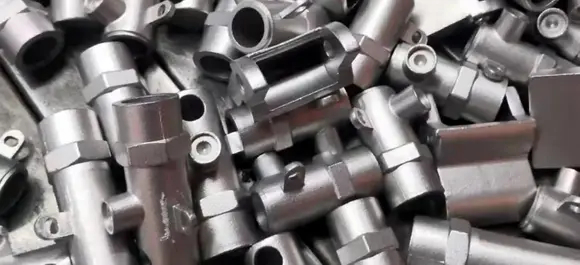Mobile:+86-311-808-126-83
Email:info@ydcastings.com
aluminum alloy casting
Understanding Aluminum Alloy Casting
Aluminum alloy casting is a critical process in the manufacturing industry, known for its versatility, lightweight characteristics, and superior mechanical properties. This method involves pouring molten aluminum alloy into a mold, allowing it to cool and solidify into a desired shape. The significance of aluminum alloy casting spans various sectors, including automotive, aerospace, electronics, and consumer goods.
The Basics of Aluminum Alloys
Aluminum alloys are categorized into two main types wrought and cast. Wrought alloys are processed by deformation, such as rolling or extrusion, whereas cast alloys are created through a casting process. The most common aluminum casting alloys are classified under the American Society for Testing and Materials (ASTM) standards. They are assigned a four-digit number, which refers to their primary alloying elements. For example, the 3xx.x series contains silicon as the main alloying element, which enhances fluidity and reduces shrinkage during solidification.
Advantages of Aluminum Alloy Casting
Aluminum alloys offer a unique combination of properties that make them ideal for casting applications. One of the primary benefits is their lightweight nature. Aluminum is significantly lighter than steel, which helps reduce the overall weight of the final product, leading to improved fuel efficiency in transportation applications.
Another key advantage is corrosion resistance. Aluminum naturally develops a protective oxide layer that shields it from environmental factors, making it suitable for applications in harsh conditions. Additionally, aluminum alloys possess excellent thermal and electrical conductivity, making them preferred choices for heat exchangers and electrical components.
Furthermore, aluminum alloy casting allows for intricate designs and complex geometries that would be challenging to achieve with other manufacturing methods. The casting process enables manufacturers to create detailed features and thin walls without sacrificing strength, making it an efficient choice for producing component parts.
Common Casting Processes
aluminum alloy casting

Several casting methods can be utilized for aluminum alloys, including sand casting, die casting, investment casting, and permanent mold casting.
1. Sand Casting This is one of the oldest casting methods and involves creating a mold from sand. It is highly versatile and suitable for large parts, allowing for complex shapes but generally resulting in a rough surface finish. 2. Die Casting This process uses high-pressure to force molten aluminum into a mold cavity. Die casting produces parts with smooth surfaces and high dimensional accuracy, making it ideal for high-volume production runs.
3. Investment Casting Also known as lost-wax casting, this method involves creating a wax pattern that is coated in a ceramic material. Once the ceramic hardens, the wax is melted away, and molten aluminum is poured into the cavity. This technique is excellent for intricate designs and high precision.
4. Permanent Mold Casting This method utilizes a reusable mold, typically made from metal, that allows for better heat transfer compared to sand molds. It results in superior dimensional accuracy and surface finish.
Applications of Aluminum Alloy Castings
The applications of aluminum alloy castings are vast and varied. In the automotive industry, cast aluminum parts are used in engine blocks, transmission housings, and wheels, providing strength while reducing weight. The aerospace sector leverages aluminum castings for components in aircraft structures and engines, benefiting from aluminum’s excellent strength-to-weight ratio.
Electronics manufacturers utilize aluminum castings for housings and heat sinks, benefiting from their thermal conductivity. In consumer goods, cast aluminum is prevalent in kitchenware, furniture, and sports equipment, combining aesthetic appeal with functional durability.
Conclusion
Aluminum alloy casting stands as a cornerstone of modern manufacturing, marrying functionality with efficiency. Its widespread applications across industries highlight the importance of this process in producing high-quality, lightweight components. As technology continues to evolve, advancements in casting processes will further enhance the capabilities and applications of aluminum alloys, ensuring their role remains vital in the future. The ongoing research and development in this field are likely to lead to even more innovative uses for aluminum alloy casting, reaffirming its place as a key player in the manufacturing landscape.
-
Why Should You Invest in Superior Pump Castings for Your Equipment?NewsJun.09,2025
-
Unlock Performance Potential with Stainless Impellers and Aluminum End CapsNewsJun.09,2025
-
Revolutionize Your Machinery with Superior Cast Iron and Aluminum ComponentsNewsJun.09,2025
-
Revolutionize Fluid Dynamics with Premium Pump ComponentsNewsJun.09,2025
-
Optimizing Industrial Systems with Essential Valve ComponentsNewsJun.09,2025
-
Elevate Grid Efficiency with High-Precision Power CastingsNewsJun.09,2025











